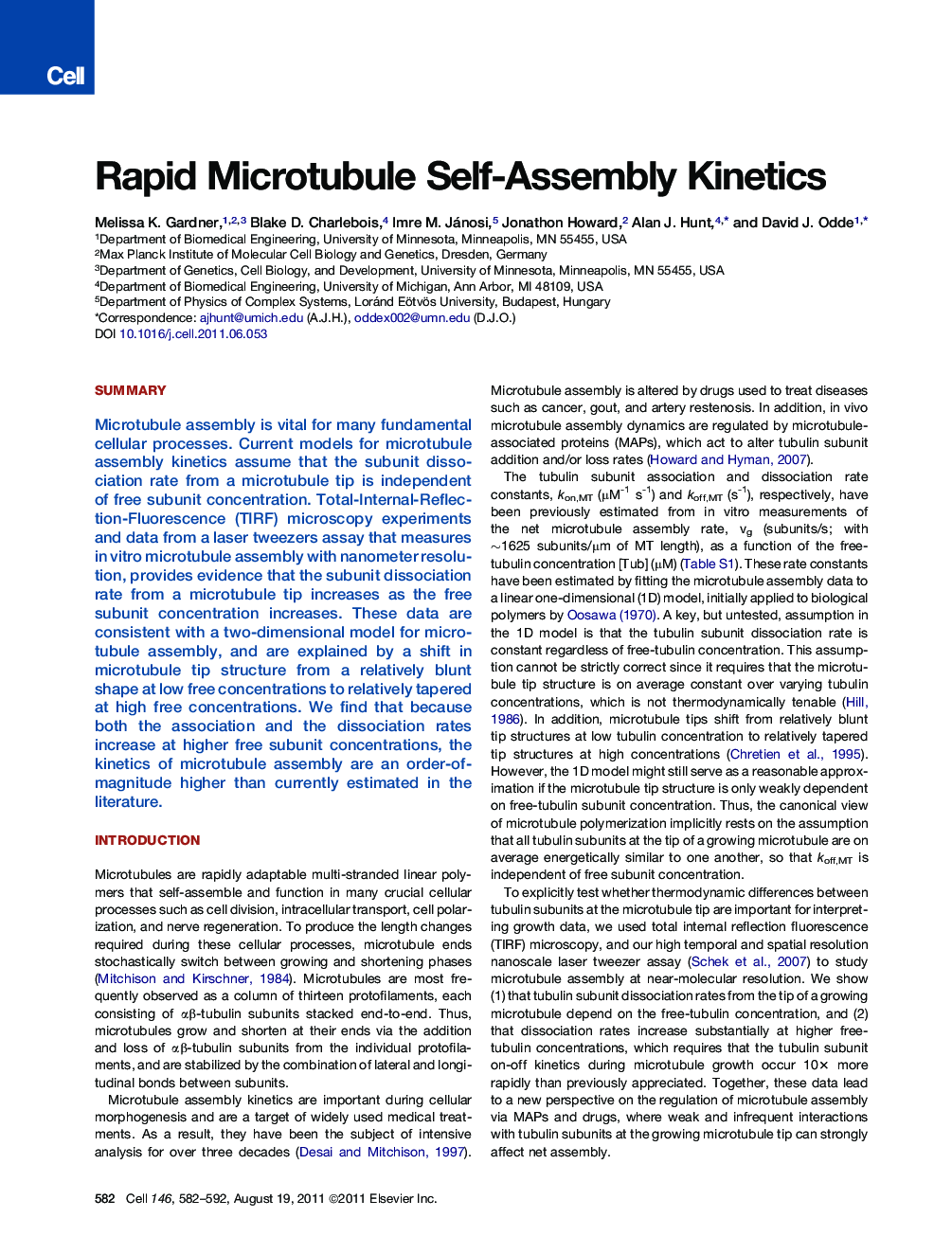| Article ID | Journal | Published Year | Pages | File Type |
|---|---|---|---|---|
| 2036228 | Cell | 2011 | 11 Pages |
SummaryMicrotubule assembly is vital for many fundamental cellular processes. Current models for microtubule assembly kinetics assume that the subunit dissociation rate from a microtubule tip is independent of free subunit concentration. Total-Internal-Reflection-Fluorescence (TIRF) microscopy experiments and data from a laser tweezers assay that measures in vitro microtubule assembly with nanometer resolution, provides evidence that the subunit dissociation rate from a microtubule tip increases as the free subunit concentration increases. These data are consistent with a two-dimensional model for microtubule assembly, and are explained by a shift in microtubule tip structure from a relatively blunt shape at low free concentrations to relatively tapered at high free concentrations. We find that because both the association and the dissociation rates increase at higher free subunit concentrations, the kinetics of microtubule assembly are an order-of-magnitude higher than currently estimated in the literature.
Graphical AbstractFigure optionsDownload full-size imageDownload high-quality image (177 K)Download as PowerPoint slideHighlights► Microtubule assembly kinetics are 10-fold more rapid than previously estimated ► Subunit on and off rates increase equally as tubulin concentration increases ► Tip structure changes as a function of free-tubulin concentration ► A 2-D model accurately describes multistranded biological self-assembly
